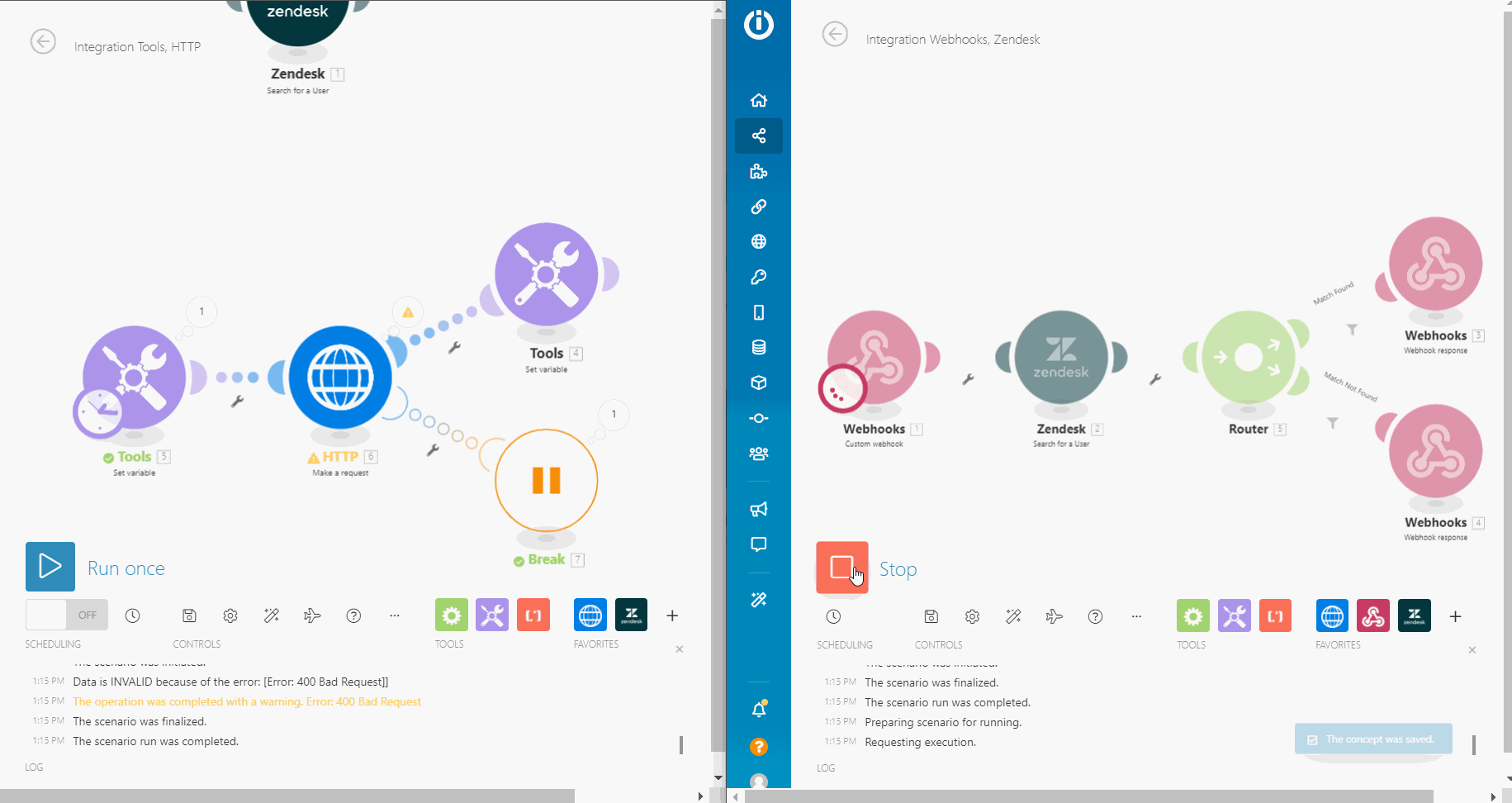![[Important]](https://docs.boost.space/wp-content/themes/bsdocs/docs-parser/HTML/css/image/important.png) |
Important |
|---|---|
| This article describes alternatives and workarounds to mimic the Throw error handling directive. |
Boost.space IntegratorPart of the Boost.space system, where you can create your connections and automate your processes. does not offer the Throw error handling directive. This feature implementation is being analyzed and evaluated.
To conditionally throw an error you may configure a module to make it optionally purposely fail during its operationOperations are tasks in integration scenarios, similar to "operations" in Make.com. Each action, like reading or updating a record, counts as one operation. They’re essential for data syncing between apps and reset monthly. Going over the limit pauses syncing until you add more or upgrade your plan.. One possibility is to employ JSON > Parse JSON module configured to optionally throw an error (BundleValidationError in this case):

You can then attach one of the error handling directives to the error handling route to:
- force the scenarioA specific connection between applications in which data can be transferred. Two types of scenarios: active/inactive. execution to stop and perform the rollback phaseRollback is a phase that occurs when there is an error during the operation or commit phase on any module. The scenario execution stops the operation or commit phase and starts the rollback phase, reversing all changes in data.: Rollback
- force the scenario execution to stop and perform the commit phaseCommit is the third phase of scenario execution. If the operation phase is successful for all modules, the commit phase begins and makes all data changes permanent. This means that Boost.space Integrator sends information to all the services involved in the operation phase about its success.: Commit
- stop the processing of a route: Ignore
- stop the processing of a route and storing it in the queue of incomplete executions: Break
The following example shows the use of the Rollback directive:
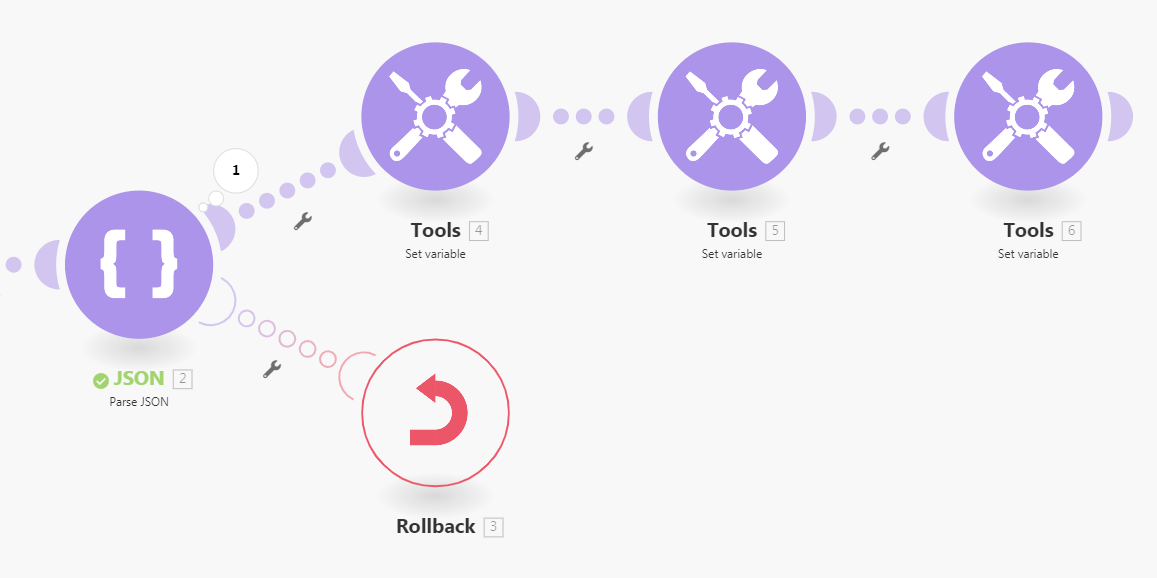
Workaround – Using HTTP Module
Usecase – Retry after some time if there is no record found using Break Directive. Usually, this is crucial when your record doesn’t update instantly and you would like to process it later on in automation. Using this Break directive could be handy with the lesser complexity of the setup.
Current Barrier – Boost.space Integrator does not offer a module that would enable you to easily conditionally generate (throw) errors.
To give you a better understanding here is the current setup without modification: This scenario search in Zendesk if there is no use it won’t throw an error forcefully to search it again you would need to implement a complex procedure by saving the record.
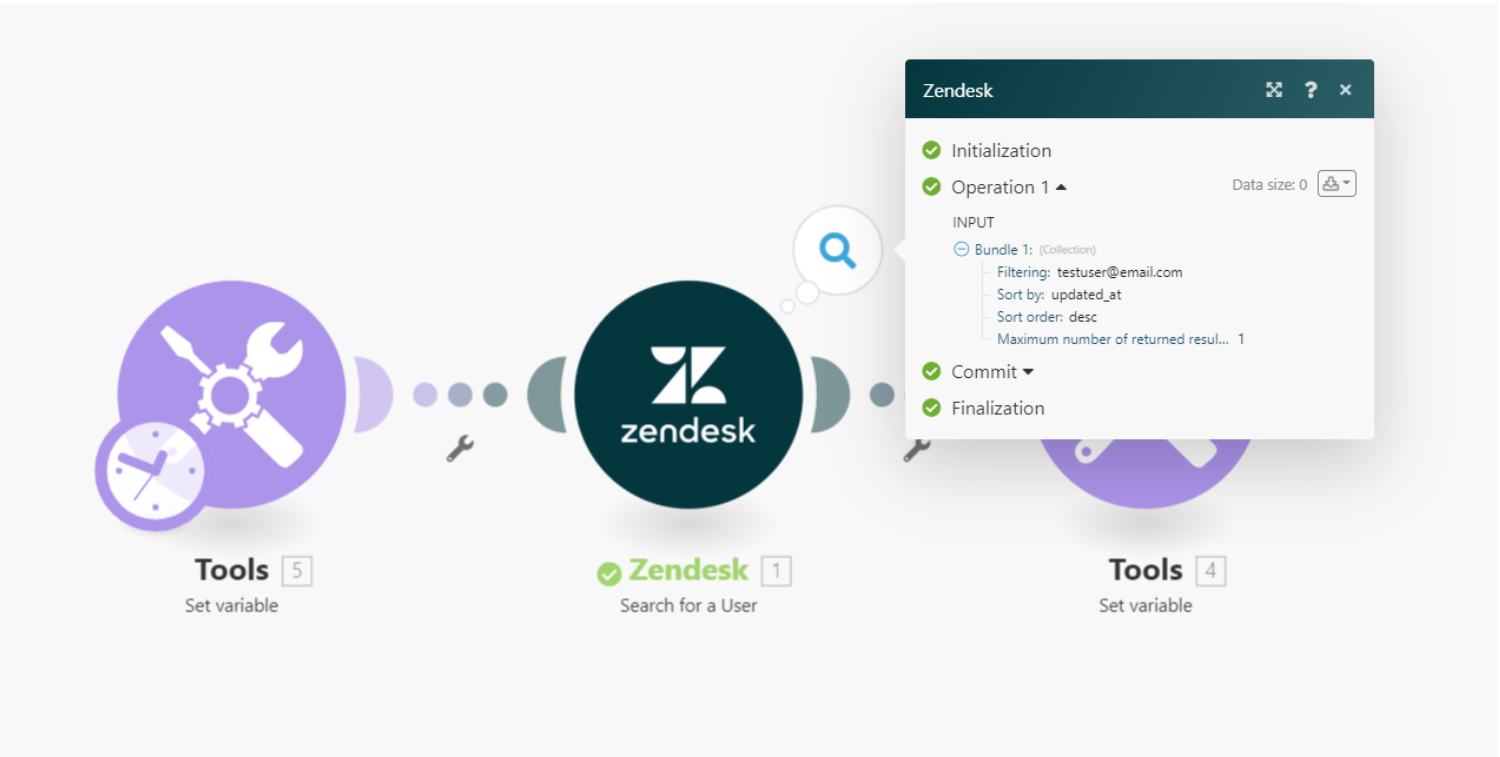
Solution – To conditionally throw an error you may replace the module where you want to throw an error, with an HTTP module then perform the search in a second scenario linking the HTTP module using webhookA webhook is a way for an app to send real-time information to a specific URL in response to certain events or triggers. with a second scenario. If no result found you can customize the module to throw an error
Scenario One –
- Replace the Module where you want to throw an error with HTTP > Make a Request module
- Configure the URL within the query parameter that you will get from the Custom Webhook module and add an optional query parameter to search for the email
- Enable the advanced settings and check the evaluate all the states as errors.
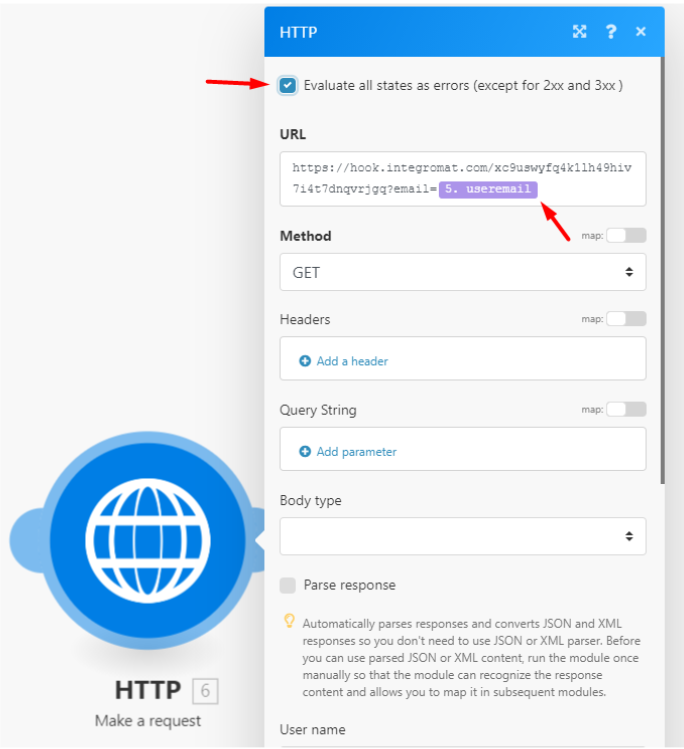
- Add a Break handler in that HTTP module and configure the setup to run later.
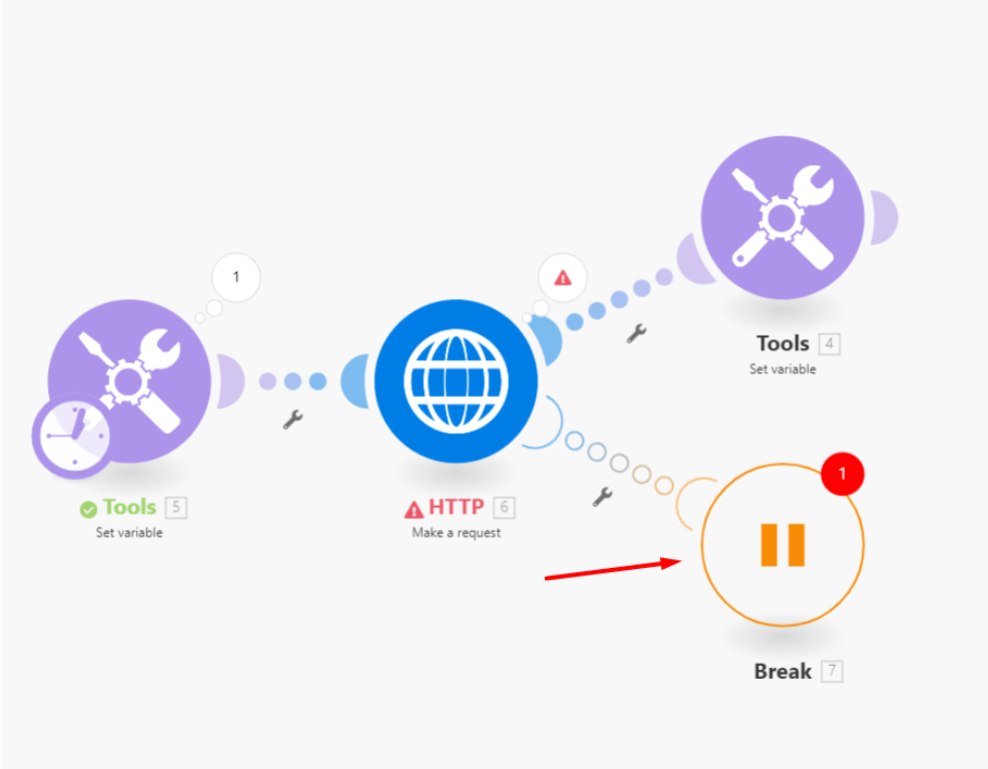
Scenario 2 –
- Setup WebhooksA webhook is a way for an app to send real-time information to a specific URL in response to certain events or triggers. > Custom Webhooks as a triggerThe initial event that starts a scenario. It can be an action, a scheduled time, or a custom event, and is essential to define at the beginning of each scenario. and copy the URL use it in the HTTP module as shown in the previous steps.
- Here use the Zendesk > Search for a User module use the parameter from the HTTP module to perform a query. Enable Continue the execution of the route even if the module returns no results
- Add a RouterA router allows you to add new routes to a scenario so you can branch your flow into several routes and process the data within each route differently. and create two routes
- Setup the first filter for Record Exist
- The second one for Record Doesn’t exist
- Consecutively setup the webhook response module
- If result found – send 200 status along with the required body in JSON format.
- If no result found – Send 4xx/404 and in the JSON no record found
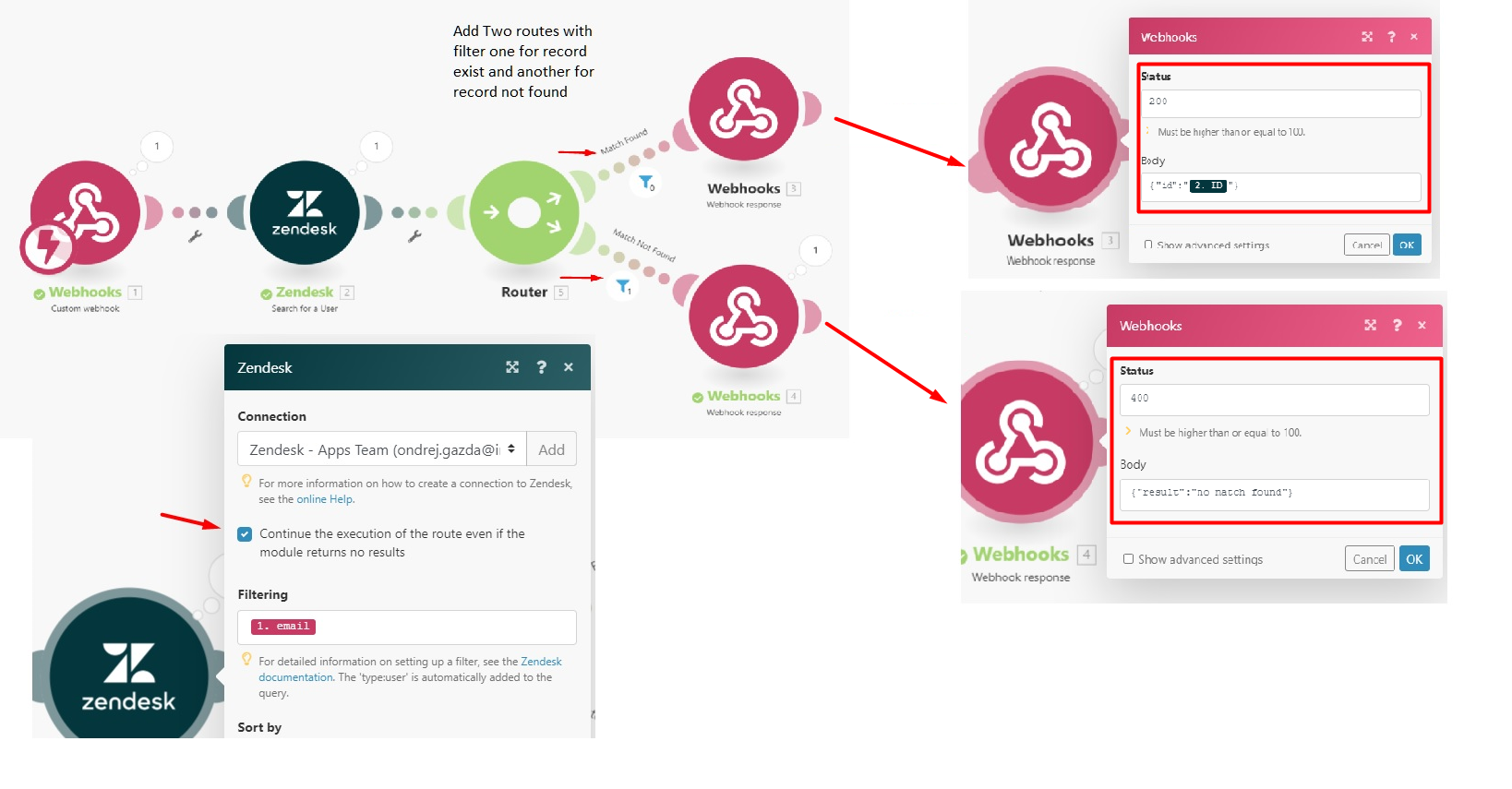
The following example returning the result – You will notice when the Zendesk module executes the API it doesn’t send any error message but in the action, we’re replicating the error using the HTTP module.
